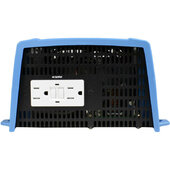Shouldn't a socket tester on an extension cord read the same as the outlet the cord is plugged into? If not, explain. I don't do videos longer that 2 minutes.
Ok
if I must, as no one has bothered to watch the video's I linked to help you guys understand.
OBVIOUSLY, we are now making 230v from 12v, yes, we all know that, 12v is a lot safer than 230v, we can all agree.
with an extension lead, every socket on the extension lead ultimately shares the same ground,
for arguments sake, say we have a 5-socket extension lead, with say, a kettle, toaster, sandwich maker etc etc and you get a fault on one appliance, now what !!!!???? do you see where this is going ???? every appliance could potentially be live as they are all sharing the same ground, all 5 appliances could have 230v on them ready for you to touch.
these one socket inverters are built with one socket for a reason, why would Victron or other manufactures not put a terminal so you could wire it into multiple sockets via a consumer unit or extension lead, ask yourself, why ONLY ONE socket????
yes you can use a extension lead with multiple sockets, BUT only if the appliances are class 2 items.
YOU SHOULD REALLY UNDERSTAND THIS.
I am trying to help you guys have a better understanding of what's going on with the 230v ac side of things
try watching the video and learn something





